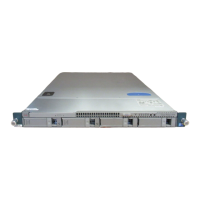© 2013 Cisco and/or its affiliates. All rights reserved. This document is Cisco Public Information. Page 6 of 48
servers. When this model is extended to virtual machines, which are deployed on a larger scale than physical
hosts, it leads to longer deployment times.
The Cisco Nexus 1000V provides an excellent and improved management and configuration model to manage
virtual switches and virtual network policy. In this model, network administrators define a network policy template
that virtualization or server administrators can apply to all virtual machines that require the same network policy.
These policy templates are referred to as port profiles.
Port profiles create a unique collaborative model, giving server administrators the autonomy to provision new
virtual machines without waiting for network reconfigurations to be implemented in the physical network
infrastructure. For network administrators, the combination of the Cisco Nexus 1000V feature set and the
capability to define a port profile using the same syntax as for existing physical Cisco switches helps ensure that
consistent policy is enforced without the burden of having to manage individual virtual switch ports.
In addition to reducing deployment time, port profiles help maintain separation of duties for the server and the
network administrators. Although virtual switches are created on Microsoft Hyper-V servers, port profiles defined
on the VSM enable the Cisco Nexus 1000V administrator to maintain and enforce consistent network policy on the
virtual access layer. In this model, the server administrator is not burdened with implementing virtual network
policy. Instead, the administrator simply applies the correct port classification to each virtual machine deployed on
the Cisco Nexus 1000V logical switch.
Microsoft Hyper-V Networking
To understand the Cisco Nexus 1000V Switch for Microsoft Hyper-V, you must first understand the basics of
Microsoft Hyper-V 2012 networking. In Microsoft Windows Server 2012, Microsoft redesigned the native virtual
switch that is shipped with Microsoft Hyper-V to implement an extensible switch. The new Microsoft Hyper-V
extensible switch architecture allows third-party vendors to provide extensions that enhance the capabilities of the
native switch supported on Microsoft Hyper-V (Figure 2). The extensions supported are:
●
Filter: Provides the capability to filter certain flows
●
Capture: Provides the capability to capture and redirect certain flows
●
Forward: Provides the capability to filter and capture flows and perform Layer 2 forwarding
The Cisco Nexus 1000V VSM implements a forwarding extension to enhance the capabilities of the Microsoft
Hyper-V extensible switch. For more information about the Microsoft Hyper-V extensible switch, refer to the
Microsoft documentation at
http://msdn.microsoft.com/en-us/library/windows/hardware/hh582268(v=vs.85).aspx.

